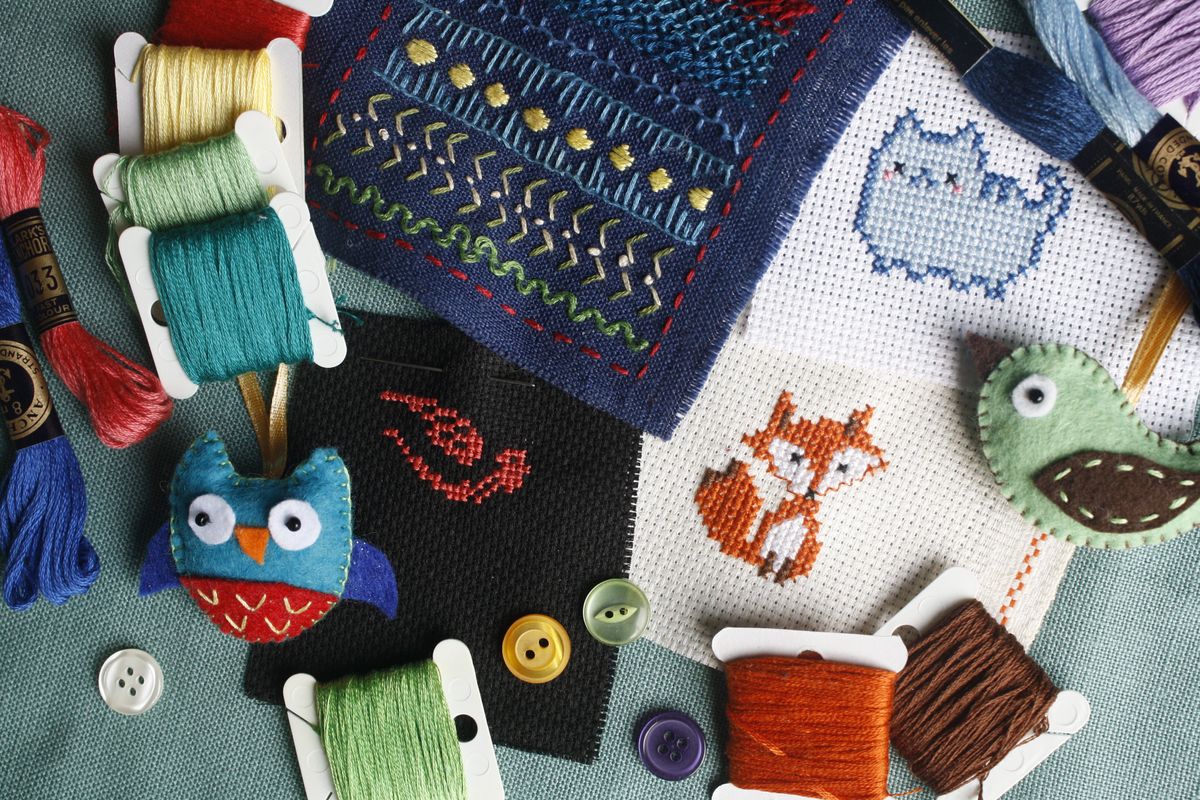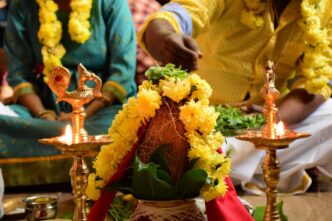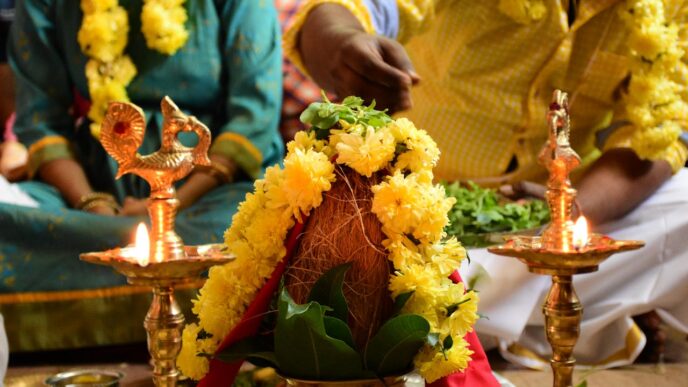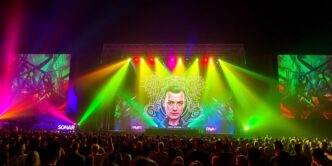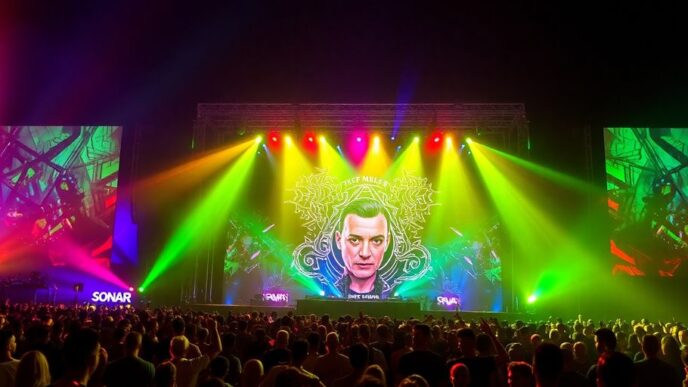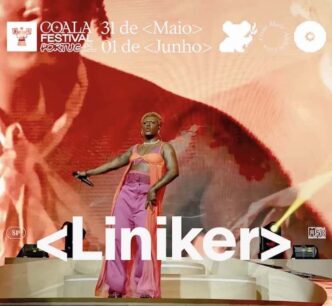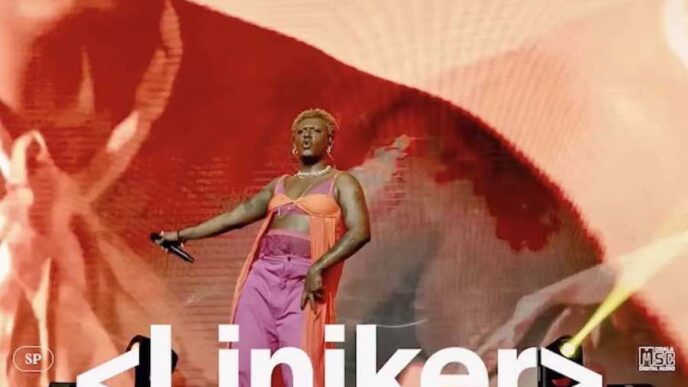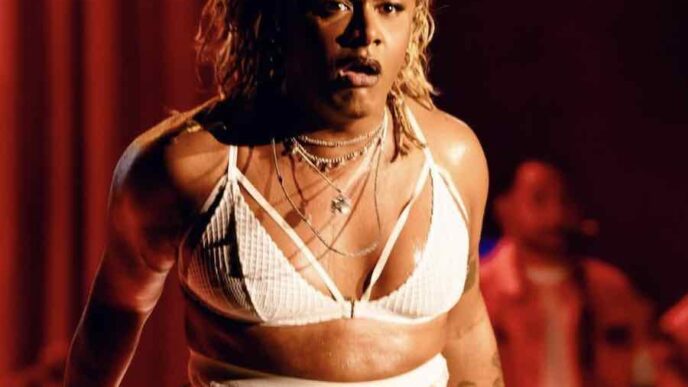Vanessa Barragao is a talented textile artist hailing from Albufeira in the Algarve. Known for her unique mini tapestries and dedication to sustainability, Vanessa’s work is a testament to her artistic journey and the influence of her surroundings. She skillfully weaves environmental consciousness into her textile art, utilising post-industrial waste and recycled materials to create pieces that are not only visually stunning but also carry a powerful message about the importance of circularity in creation. As a prominent figure in the Algarve art scene, her work contributes to the rich tapestry of local culture and the global dialogue on sustainable art practices.
The Artistic Journey of Vanessa Barragão
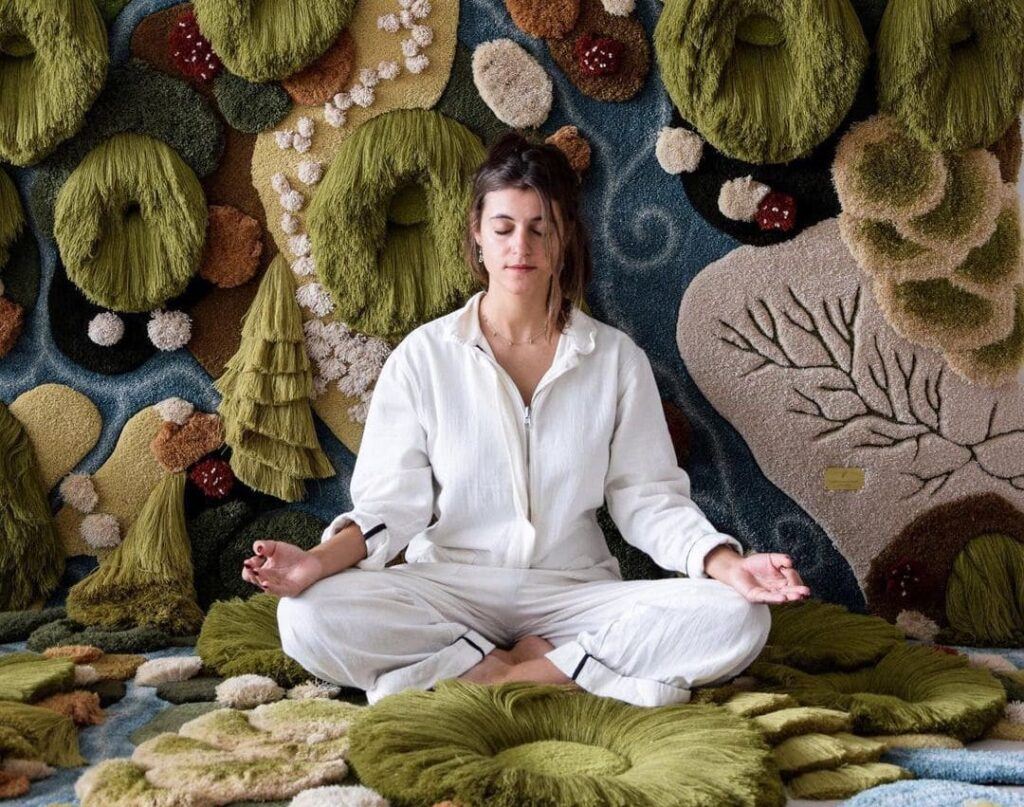
Early Inspirations and Career Beginnings
Vanessa Barragão’s artistic journey began in the picturesque town of Albufeira, in the Algarve region of Portugal. Her passion for textiles and the environment has been a driving force behind her work, leading her to create pieces that are not only visually stunning but also carry a strong message of sustainability.
-
Early Life: Growing up in a region known for its rich artistic heritage, Vanessa was surrounded by the vibrant colorus and textures of the Algarve, which have greatly influenced her aesthetic.
-
Education: She honed her skills at the Lisbon University, where she specialised in textile design, and later furthered her education in London.
-
Professional Path: Vanessa’s career took a significant turn when her work was recognized internationally, with exhibitions across Europe and as far as New York, where her tapestry found a new ‘home’ at the UN headquarters.
Vanessa Barragão’s studio, located in her hometown, welcomes visitors who are interested in her work. The studio’s opening hours are designed to accommodate art enthusiasts and collectors alike.
Signature Style and Techniques
Vanessa Barragão’s work is a vivid testament to her unique blend of creativity and technical prowess. Her signature style is characterized by a rich tapestry of textures and colors, often inspired by the ocean and marine life. The techniques she employs are a harmonious fusion of traditional craftsmanship and contemporary innovation.
- Textural Depth: Vanessa’s pieces exhibit a remarkable depth of texture, achieved through layering and the intricate interplay of materials.
- Color Palette: Drawing from nature, her color choices are both vibrant and harmonious, reflecting the diversity of the underwater world.
- Sustainable Practices: A cornerstone of her technique is the use of recycled and upcycled materials, underscoring her commitment to environmental sustainability.
Exhibitions and Milestones
Vanessa’s artistic journey has been marked by a series of significant exhibitions and milestones that have solidified her reputation in the world of textile art. Her work has been showcased in various prestigious venues, reflecting her growing influence and the increasing recognition of her unique approach to textile creation.
- In 2023, she received an honorable mention from the Associa\u00e7\u00e3o Portuguesa de Museologia (APOM) for her contribution to the field of art accessibility and heritage.
- Her exhibitions have not only been confined to Portugal but have also reached international audiences. For instance, in the last quarter of 2024, her work will be exhibited at the Museu Nacional de Arte in Maputo, Mozambique, highlighting her global appeal.
- The exhibitions often extend beyond mere displays of art; they are events that invite photography and filming, allowing for a wider public dissemination and engagement with her work.
Sustainability in Textile Art

Embracing Circularity in Creation
Vanessa Barragão’s approach to textile art is deeply rooted in the principles of circularity. Her creative process is a testament to the potential of sustainable practices in the art world. By prioritizing the reuse and repurposing of materials, she not only minimizes waste but also adds layers of history and meaning to her pieces.
- Reusing materials: Vanessa often works with leftover yarns from the textile industry, giving them a new life in her art.
- Repurposing techniques: She employs traditional techniques in innovative ways to work with recycled materials.
- Zero-waste philosophy: Her studio operates with a commitment to producing as little waste as possible.
Vanessa’s work is a harmonious blend of artistry and environmental stewardship, showcasing how creativity can flourish within the bounds of sustainability.
The Role of Post-Industrial Waste
Vanessa’s commitment to sustainability is evident in her innovative use of post-industrial waste. By incorporating materials that would otherwise contribute to environmental degradation, she breathes new life into discarded elements, transforming them into intricate textile art.
- Recycled Materials: Vanessa’s mini tapestries are a testament to her sustainable approach, utilizing recycled yarn and surplus raw materials from collections.
- Sustainable Practices: Her work not only reduces waste but also raises awareness about the importance of sustainability in the art world.
Vanessa Barragao’s art is a bridge between community and sustainability, reflecting a deep engagement with ecological concerns and the potential for art to inspire change.
Advocating for Environmental Consciousness
Vanessa Barragão’s commitment to environmental consciousness is not just a facet of her work; it’s the core of her artistic philosophy. Through her textile art, she advocates for a deeper connection between humans and nature, urging a collective responsibility towards the Earth. Her pieces are more than just visually stunning; they are a call to action, a reminder of the impact our choices have on the environment.
- Creating large-scale works that recreate these ecosystems
- Sharing powerful messages calling for sustainability
- Engaging the community in dialogue about sustainable practices
In her exhibitions, Vanessa’s work often serves as a bridge, inviting viewers to consider the sustainability of their own practices and to engage in collective reflection. The human connections fostered through her art lead to a mesh of ideas that evolve into a profound contemplation of our role in the world. Sustainability takes on a human form in her work, reshaped by themes of care, healing, and stewardship.
Vanessa Barragão’s art is a journey through sustainability, from the discovery and use of natural materials to the awareness of our bodies and the understanding of sustainable thought and action.
Her studio, located in the heart of the Algarve, is open to visitors who wish to witness the creation process firsthand. The opening hours are designed to welcome art enthusiasts and environmental advocates alike, fostering an environment where art and ecology coexist harmoniously.
Vanessa Barragão’s Mini Tapestry

Composition and Craftsmanship
Vanessa’s mini tapestries are a testament to her commitment to both aesthetic beauty and environmental responsibility. Each piece is meticulously crafted, with a composition of 100.0% cotton, ensuring a natural and tactile experience for the viewer. The decorative mini tapestries are not just visually appealing but also tell a story of sustainability, as they are made with post-industrial waste and recycled Re(Play) yarn, turning surplus materials into art.
The craftsmanship involved in creating these tapestries requires a deep understanding of textile techniques and a dedication to precision. Vanessa’s work is characterized by a harmonious blend of colors and textures, which come together to form intricate patterns and motifs. The result is a unique piece that is both decorative and meaningful, reflecting the artist’s vision and skill.
The mini tapestries serve as a symbol of how art can be both beautiful and eco-conscious, embodying a philosophy that values our planet’s resources and the need for sustainable practices in the art world.
Integrating Recycled Materials
Her commitment to sustainability is vividly reflected in her choice of materials. Her mini tapestries are not only a testament to her artistic skill but also to her dedication to environmental responsibility. Each piece is crafted using post-industrial waste, specifically recycled re(PLAY) yarn and surplus raw materials from her collections.
The integration of these materials is a deliberate choice, aiming to reduce the environmental impact of textile production. By repurposing waste, Vanessa adds a layer of depth to her work, both in texture and in narrative. The materials used are a mix of the old and the new, telling a story of transformation and renewal.
The decorative mini tapestries serve as a bridge between art and sustainability, inviting viewers to consider the role of recycled materials in creative expression.
These creations are not only decorative but also carry a message of conservation, echoing the broader dialogue about sustainability in the art community. Vanessa’s work is a call to action, encouraging a collective reflection on our consumption habits and the potential for circularity in art.
Decorative and Functional Aspects
Vanessa Barragao’s mini tapestries are not only visually stunning but also serve a dual purpose. These intricate pieces are designed to be both decorative and functional, adding a touch of elegance and warmth to any interior space.
- Each tapestry is a unique piece of art, meticulously handcrafted with attention to detail.
- The use of recycled materials in their creation speaks to a commitment to sustainability.
- While primarily decorative, they can also function as insulation, absorbing sound and adding a layer of thermal comfort.
Vanessa Barragao’s work is a testament to the harmonious blend of artistry and environmental responsibility.
Her studio, where these mini tapestries come to life, is a hub of creativity located in the heart of the Algarve. Visitors and art enthusiasts are welcome to explore the space and witness the creation process firsthand. For those interested in viewing or purchasing her work, the studio’s doors are open from 10 am to 5 pm, Monday through Friday.
The Algarve Art Scene

Influence of the Algarve on Local Artists
The Algarve region, with its rich landscapes and cultural heritage, has long been a source of inspiration for artists. The natural beauty of the area, from the rugged coastline to the tranquil countryside, provides a canvas for creativity and innovation. Local artists often draw upon the unique colors, textures, and light of the Algarve to inform their work, resulting in pieces that are deeply connected to the region’s identity.
The Algarve not only shapes the aesthetic of local artists but also nurtures their creative processes, allowing for a vibrant and dynamic art scene that is reflective of its surroundings.
Spotlight on Female Artists in Algarve
The Algarve region has become a vibrant hub for female artists, with Vanessa Barragão standing out as a prominent figure. Her work is a testament to the rich tapestry of talent in the area, often showcased in local galleries and exhibitions. Barragão’s studio, located in the heart of Algarve, is a creative sanctuary where visitors can immerse themselves in her textile masterpieces.
- Exhibition Venues: Vanessa’s work has been displayed at esteemed locations such as the Galeria Manuela Vale and the Reitoria da Universidade de Lisboa.
- Exhibition Dates: Her pieces have graced exhibitions like ‘SOFTSPACE’ and ‘Arte no Feminino — 10 anos 10 artistas’, with the latter celebrating a decade of female artistic expression.
- Studio Visits: For those interested in experiencing her art firsthand, Vanessa Barragão’s studio is open to the public from Monday to Friday, 10 am to 6 pm.
Vanessa Barragão’s contributions to the Algarve art scene are not only a reflection of her personal journey but also a beacon of inspiration for aspiring female artists in the region.
Collecting Textile Art

Investing in Unique Textile Pieces
The allure of textile art lies in its tactile richness and the unique stories woven into each piece. Collectors of textile art, like those who admire Vanessa Barragão’s work, are drawn to the originality and the intricate details that set these artworks apart from mass-produced items.
Investing in textile art involves several considerations:
- Assessing the artist’s reputation and portfolio: Understanding the artist’s previous work and exhibitions can provide insight into the quality and potential value of their pieces.
- Evaluating the materials and craftsmanship: The choice of materials and the skill level of the artist are critical in determining the durability and aesthetic of the artwork.
- Considering the artwork’s provenance: Knowing the history and origin of the piece can add to its value and significance.
Vanessa Barragão’s mini tapestries, for example, are not only decorative but also tell a story of sustainability. Made with post-industrial waste and recycled fibers, her pieces reflect a commitment to environmental consciousness. Collectors are not just purchasing a piece of art; they are supporting a movement towards a more sustainable future in the art world.
Care and Maintenance of Textile Art
Textile art pieces, like those created by Vanessa Barragão, require careful attention to maintain their beauty and integrity over time. Here are some guidelines to help preserve these unique works:
- Wash with full and cold loads to minimize environmental impact and fabric wear.
- Hang dry to retain the shape and texture of the textile.
- Iron only when necessary to avoid excessive heat damage.
- When the piece no longer fits your space or style, consider donating or recycling it to extend its life cycle.
Textile art is not just an aesthetic choice but an investment in craftsmanship and sustainability. Proper care ensures that these pieces can be appreciated for years to come.
The Future of Textile Art Collecting
As the appreciation for textile art continues to grow, collectors are increasingly seeking out unique pieces that not only enhance their personal spaces but also embody a story or a cause. Vanessa Barragão’s work, with its intricate craftsmanship and commitment to sustainability, represents a prime example of collectible textile art.
- Investment in textile art is not just a financial decision but also an ethical one, as it supports artists who prioritize eco-friendly practices.
- Maintenance of textile pieces requires knowledge and care, ensuring that the beauty and integrity of the work are preserved for future generations.
- The evolving market for textile art suggests a bright future, with innovative artists like Barragão leading the way.

